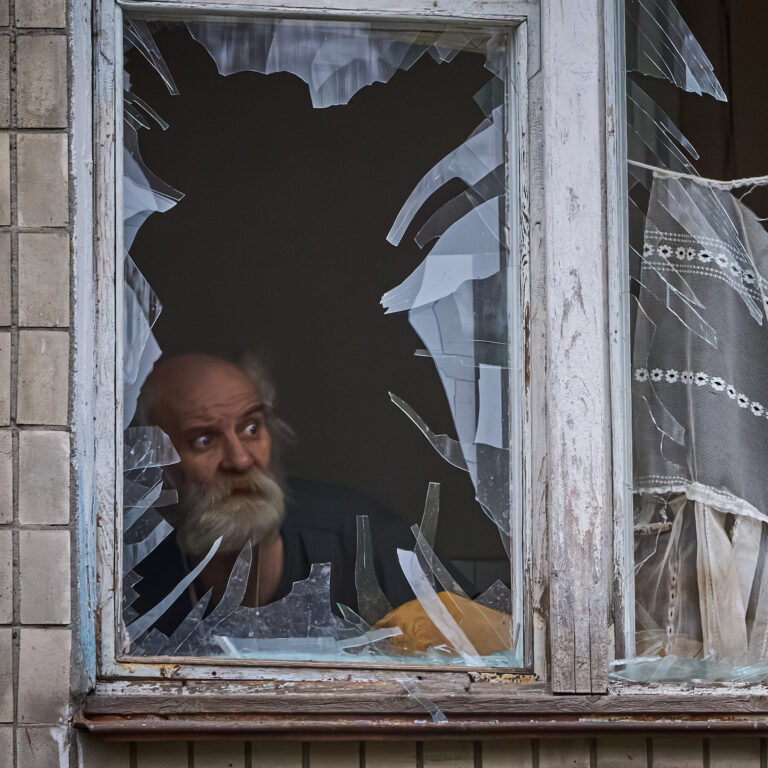Set to a lively electronic soundtrack, a recent video clip showed what the Hezbollah militia considered a missile-launching drone, a new weapon in its arsenal as it stepped up its attacks on Israel.
Showing off a new weapon is the kind of muscular display that Hassan Nasrallah, the organization's elusive leader, boasts about. “What protects you is your strength, your courage, your fists, your weapons, your missiles and your presence on the field,” he said in a speech earlier this year.
Hezbollah's attacks, which began last October in solidarity with Hamas in the Gaza war, have gradually intensified as the group uses larger, more sophisticated weapons to strike more often and deeper across the border between Israel and Lebanon. Israel is also hitting targets further away in Lebanon.
Hezbollah's latest surge occurred this week, with a series of daily drone strikes by the militias hitting some civilian targets including in Israel. Senior officials, starting with Israeli Prime Minister Benjamin Netanyahu, fueled their rhetorical threats against Hezbollah, suggesting that the day of reckoning was near.
However, each time the fighting intensifies, both Hezbollah and Israel appear to calibrate their “tit for tat” attacks so that no one attack triggers a larger conflict. While concerns about a broader war remain, both sides appear hampered in different ways that impose restrictions.
The video – released by Hezbollah's military press office in May – illustrates how, in a certain sense, the group has never been stronger. Its main patron, Iran, has provided an increasingly powerful array of missiles. Hezbollah has also gained valuable battlefield experience after years of deploying what is believed to be at least 2,500 special forces troops to Syria to help support the government of President Bashar al-Assad.
But Hezbollah is not just a fighting force; has evolved into a broader Lebanese political movement that must weigh in on dragging the entire country into another war as the conflict-weary population continues to stagger through an extended economic crisis.
Violence at the border has already cost billions of dollars in tourism and agriculture revenue, Lebanese officials say. The last war, in 2006, left a trail of devastation across the country, displacing at least a million people. Arab states and Iran helped finance the reconstruction. It is unclear whether they would do so again, and countless Lebanese have since fallen into poverty as the value of the pound has plummeted from 1,500 to 89,000 to the dollar.
Hundreds of thousands of displaced people
Around 100,000 Lebanese civilians have been displaced along the southern border since October. Many are farmers who, with crops disrupted, manage to survive on a monthly subsidy of $200 from Hezbollah. There is a widespread question as to why the Gaza war should involve Lebanon.
Khodor Sirhal, 60, a farmer from the border village of Kafr Kila, sells olive oil soap at Souk El Tayeb, the market where Beirut hipsters flock every Saturday for organic produce. He described how last October he and his wife were picking olives when intense explosions nearby forced them to flee to Beirut, where they remain.
“If you ask me why this war broke out, I don't have an answer,” he lamented. He wasn't sure whether his house or the long-dreamed-of cafe he had opened in the village a week before the fighting broke out were still intact.
A small businessman forced to abandon about 100 jars of olive oil among other goods said Hezbollah officials he questioned could not explain why Lebanon should be involved. “Either they speak in poetry or in predictions,” he said, declining to give his name for fear of retaliation. “They themselves don't have an answer.”
More than 300 Hezbollah fighters and around 80 Lebanese civilians have died since October, while at least 19 Israeli soldiers and eight civilians have been killed.
The usual bustle of the seaside capital of Tire was absent, with muffled explosions echoing in the distance. Three local schools hosted displaced families.
Salwa, 49, said she abandoned her home for a small room in a school, where 25 families share three toilets and a shower. Residents often make quick visits south to view the destruction, ranging from homes razed to furniture gnawed by mice. A local mayor estimated that 6,000 housing units in the south were completely or partially destroyed.
On her last trip home, Salwa, who declined to give her full name for fear of retaliation, discovered that only one cat was still surviving among her 10 cats and 15 dogs. “I wondered why we are in this war,” she said. “They say it's because of Palestine, but Palestine will take a long time to liberate. God help the Palestinians.”
Avoid a no holds barred war
Israel also has a number of factors holding it back. Its army is already grappling with its stated goal of eradicating Hamas from Gaza, while Washington has warned Israel against inflaming the wider region. The country must also consider its own population.
Netanyahu has threatened that Israel will repeat the destruction of Gaza in Lebanon in a full-scale war. In response, Hezbollah has gradually used increasingly sophisticated weapons, such as those shown in the video.
“The Israelis have made it very clear that they will go in with no holds barred, this would be a massive operation,” said Mona Yacoubian, who directs the Middle East and North Africa Center at the US Institute of Peace in Washington . “By the same token, this is a much more powerful Hezbollah.”
“This is a conflict that could potentially involve a large part of Israel,” he continued, adding: “I think that's actually what gave both sides pause. This would be a conflict unlike any that came before it.”
Despite frustration with the prolonged evacuation, residents on the Lebanese border are often reluctant to criticize Hezbollah, fearful of its security apparatus and yet grateful that its guerrilla warfare helped end Israel's occupation from 1982 to 2000.
Some villagers who did not flee rallied to try to stop Hezbollah from starting the war. In early April, a group of men in the predominantly Christian village of Rmeish, near the border, rang a church bell to raise the alarm when some Hezbollah fighters arrived with a mobile rocket launcher and were preparing to shoot. After a confrontation, the fighters left.
The dizzying sectarian mosaic of Lebanese politics mirrors the ambivalence on the ground; the fighting has won some new allies for Hezbollah, while alienating others. Some Sunni Muslims, who traditionally support the Palestinian cause, supported the attacks, for example.
Loyalty to Iran
But Hezbollah has long drawn the ire of other factions for its maintenance of its army and its loyalty to Iran.
“The problem today is that the Lebanese state does not control its territory, it does not control decisions about war and peace,” said Samy Gemayel, a lawmaker and head of a right-wing, predominantly Christian political party. party and whose father, Amine Gemayel, was president of Lebanon.
Iran created Hezbollah, at least in part, as a deterrent against Israeli attacks on the Islamic Republic. So Iran doesn't want to sacrifice Hezbollah in an effort to save Hamas, Gemayel said, but it may also be cavalier about the destruction of Lebanon.
“The logic of the militias is that if they remain alive after the war, then they win, whatever the losses,” he said.
Other border disputes between Lebanon and Israel over land and possible gas reserves in the Mediterranean Sea have worsened relations. Washington, negotiating indirectly with Hezbollah, had brokered a maritime border deal and was working on territorial issues, but the group has suspended its participation as the Gaza war continues.
Hezbollah's Nasrallah has repeatedly claimed since October that “the Resistance Front in Lebanon” is achieving its goal of weakening Israel. “The war of attrition is eating away at the human, security, economic, spiritual, moral and psychological levels,” he said in a recent speech.
Israel has evacuated around 60,000 residents from the north and senior officials have repeatedly promised to provide security for their return, without specifying how.
“This is part of Hezbollah's aggressiveness, which is firing ever deeper into the Israeli home front,” Lieutenant Colonel Nadav Shoshani, an Israeli military spokesman, said at a recent press conference.
In Israel, concern over a northern version of the bloody surprise attack perpetrated by Hamas on October 7 is driving some support for a pre-emptive war.
Security agencies are debating the merits of the escalation, said Sima Shine, a former senior official at Mossad, Israel's foreign intelligence agency, where she has focused on Iran. “People don't feel safe because of what they saw in the South,” he said. “And Hezbollah is much better than Hamas.”
Discussion in Israel about a possible full-scale war has intensified alongside recent daily drone strikes. While previously such attacks had largely focused on military targets, this time Hezbollah struck cities that had not been evacuated, such as Nahariya on the coast and Katzrin in the Golan Heights. It also caused fires in the north.
The Israeli military said it responded by striking Hezbollah positions with artillery and fighter jets.
Ultimately, border wars have always been fraught with the larger question of who will shape the future narrative of the Middle East.
One vision, inaugurated decades ago by Egypt and Jordan, involves accepting Israel as a neighbor, with Saudi Arabia seen as the ultimate prize. The bloody attack by Hamas, an ally of Tehran, derailed that once speeding train.
The alternative is Iran's so-called Axis of Resistance, the predominantly Shiite Muslim alliance of proxy forces in Lebanon, Iraq, Syria and Yemen that advocates an armed conflict with Israel. Hezbollah is the most powerful force that Iran has built for this purpose.
“They are challenging the leadership of the region,” said Randa Slim, a senior fellow at the Middle East Institute in Washington.
Johnatan Reiss contributed a report from Israel.





